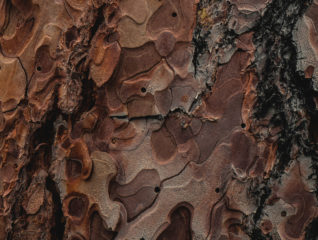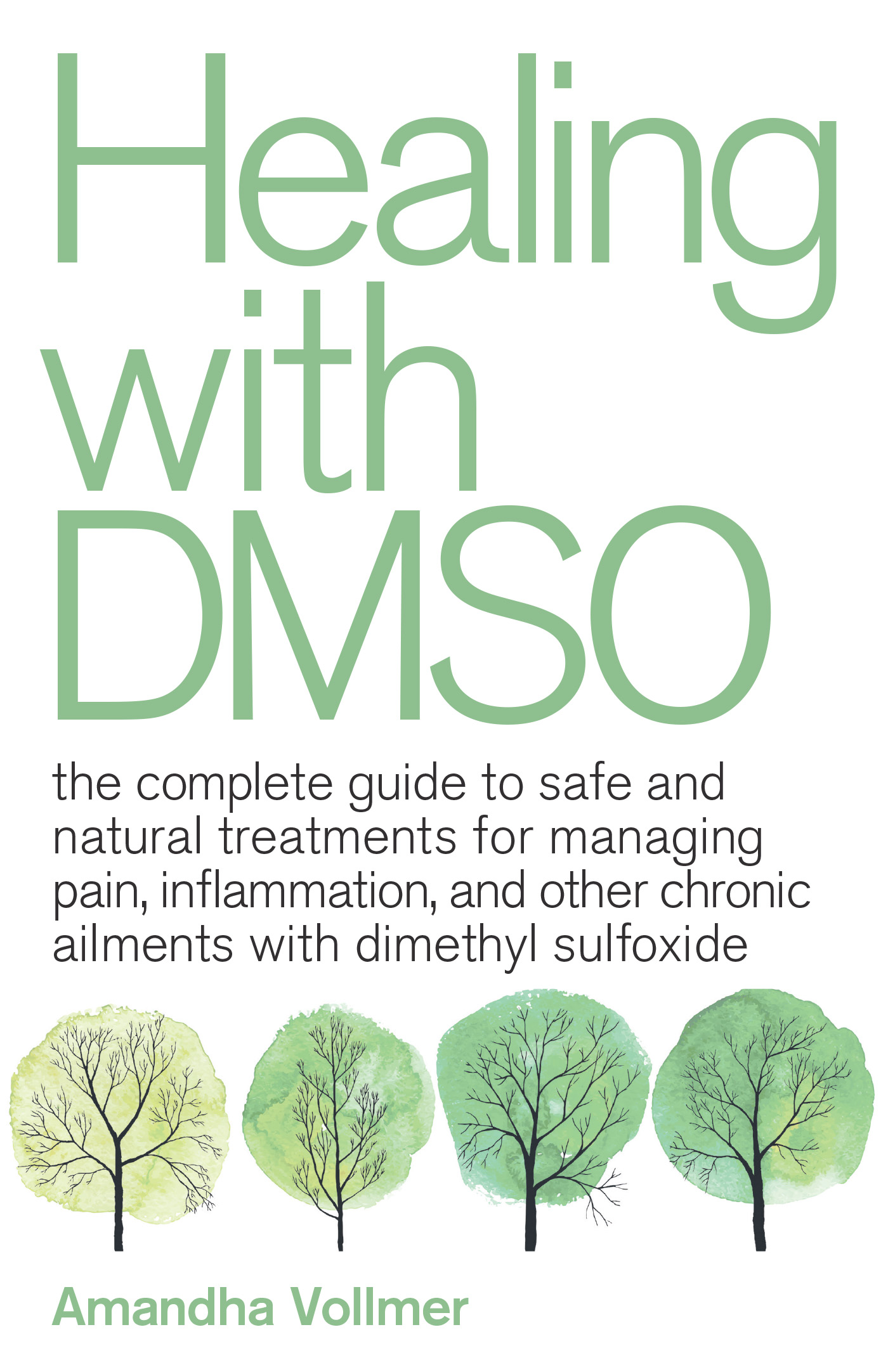
What is DMSO?
- Health
Introduction to Dimethyl Sulfoxide
This article was adapted from the introduction to Healing with DMSO by Amandha Dawn Vollmer
Getting Started with DMSO
Who could imagine that a simple extract from trees could be one of the most powerful healers of all time? It may sound like a tall claim, but once you read about the science of DMSO (dimethyl sulfoxide) and the experiences people have had using it, I’m sure you will agree.
I first became aware of DMSO in naturopathic college, where its usefulness in sports medicine was discussed. An athlete incurs an injury and heads to the sidelines, where a medic immediately applies DMSO and assesses the situation; often the athlete is able to return to the game. I found it interesting, but I found so many remedies interesting. I thought, “Well, I’m not going into sports medicine so I probably won’t need to use it,” and pretty much forgot about it.
A decade later, after designing many natural skin care products and experimenting with hundreds of natural remedies, I was wandering around a health food store and noticed a bottle of DMSO on the shelf. I thought, “Hey, I haven’t played around with this stuff, maybe I’ll pick up a bottle,” which I did. It sat on a shelf in my holistic medicine shop for many months, waiting for a customer to ask for it or for me to decide to use it in one of the creams or other unique products I formulate.
Soon after, a customer came in with a very strange rash on his forearms that appeared after a gardening session. The man said that it itched so badly, he was scratching his skin raw. It was worse at night, when he felt a crawling sensation. He had tried many creams and treatments, to no avail. I quickly realized that it must be a skin mite infection and instructed him to treat his skin with diatomaceous earth and 50 percent apple cider vinegar solution.
For some strange reason, the man kept touching me as he talked. When he left, I was so concerned about the mites spreading that I washed myself right away, but it was too late. Within a few days, when I experienced the same rash and itch, I used diatomaceous earth and apple cider vinegar on myself. While it seemed to help, I was still itchy and uncomfortable. I wondered if the DMSO (still sitting on my shelf) would speed my recovery. I grabbed the bottle containing a 90 percent solution of DMSO and applied the clear liquid to my right forearm. The warmth and burning were intense—and I loved the feeling that I had just applied something powerful! My skin became red and tingled. I applied it multiple times over a period of a few days and my skin became thick, almost leathery. (I would learn how to avoid that thickening, which I’ll share later in Healing with DMSO.)
I needed to know what was going on. I dove almost obsessively into a study of DMSO. I read all of the published studies from the 1960s and all the early information, and what I read excited me to no end. There was a lot of information to absorb, but my ability to easily read studies coupled with my background in chemistry helped me to understand DMSO on a deep level in a short amount of time. DMSO can stop strokes and heart attacks? It deals with pain and is nonaddictive? It protects DNA from radiation damage with zero side effects? It increases nutrient absorption and utilization but also can protect the liver from drug damage? What?! I needed to tell everyone what I had learned. I had been producing videos on natural health for about a year to this point. So was born my video “All about DMSO, a Miracle Healer!,” which has been extremely popular. My excitement and presentation were infectious. Since that time I have produced more videos on DMSO.
With my medical training, ability to research, knowledge of chemistry, awareness of the use of holistic medicine, and personal experience along with designing and producing over a dozen successful DMSO product blends, helping others to use DMSO successfully and receiving their testimonials, and doing research for Healing with DMSO—I feel I am becoming a leading expert on the topic and that it chose me. Life has wonderful ways of bringing you flowers, and DMSO has been that kind of unexpected gift for me.
DMSO is a substance that every person should keep in the home, every parent should have in a first aid kit, and every doctor’s office and hospital should have on hand. However, as you will learn, in North America it is a persecuted drug and I believe that its persecution has been fueled by misinformation, legal suppression, and medical dogma. Healing with DMSO sets out to dispel some of these myths and rumors, and to illuminate concrete facts about this incredible wood extract.
There are two main grades of purity (pharmaceutical and industrial) of this clear, colorless solvent, as well as a myriad of applications ranging from animal husbandry to sports medicine to organ transplantation. It can help with hair growth, cataract healing, and of course, all types of aches and pains. Healing with DMSO discusses specific applications for the medicinal use of DMSO and provides recipes you can whip up at home. But first, let’s take a look at DMSO’s history.
The Rocky History of DMSO
A Russian doctor named Alexander M. Saytzeff discovered DMSO in 1866, yet no commercial application was identified until some nine decades later. In the 1950s, British scientists learned it could be used as a cryoprotective agent (protect against the harmful effects of freezing) to preserve bone marrow and blood cells. Frozen cells are irreparably damaged by ice crystallization. However, when DMSO is added to water and used as an antifreeze, it affects the thermodynamics of the freezing process in such a way that 85 percent of cells survive (Irena Kratochvílová et al.). Cell viability and stabilization are essential in transplanting organs and preserving specimens for use in experiments. A substance that allows a tissue sample or organ to be frozen without damage and without altering the tissue in any negative way has huge value.
Scientists also found that DMSO was nontoxic to cells, which increased its versatility as a solvent. A solvent is simply a chemical that can dissolve a solute, making a solution. DMSO can dissolve anything that is either water or alcohol based as well as certain oilbased materials that are of a lighter molecular weight.
When Dr. Stanley Jacob at the Oregon Health and Science University Medical School discovered highly purified DMSO could penetrate skin and organ membranes without damaging them, he and his colleagues started looking more closely at its transdermal properties. They also found that DMSO is able to carry other substances of low molecular weight through the skin with it. However, we are getting a little ahead of the story …
Because of all its promising properties, Crown Zellerbach, one of the world’s largest paper manufacturers in the 1950s, tasked one of its chemists, Robert Herschler, to find additional uses for DMSO. Because the company produced so much DMSO as a by-product of papermaking, it wanted to find a good use for the compound. As the proverb says, necessity is the mother of invention.
During his research, Herschler observed that antifungal agents and antibiotics were able to penetrate a plant’s circulatory system when those materials were blended with DMSO. Although other chemicals like alcohol and gasoline did the same thing, DMSO was special. Herschler found that it did not damage or alter a plant’s protective outer membrane. This begged the thought: If DMSO did not damage a plant’s outer coating, perhaps the same would be true of DMSO applied to human skin.
Recognizing the potential medicinal applications, Herschler contacted his old friend Dr. Stanley Jacob, assistant professor of surgery at the University of Oregon. Dr. Jacob was specifically interested in cryobiology and was thrilled to be able to perform experimental research on a substance with such unique biological properties.
Oddly enough, DMSO got off to a bad start soon after initial research was completed. In 1963, newspapers in Oregon got hold of the patent information and sensationalized the properties of DMSO before it traversed the proper medical community channels. Because the word was already out, DMSO didn’t have the chance to be introduced in scientific journals and backed up by studies, facts, and evidence. Rather, it came across as a hyped cure-all. Despite the substance having been tested on over 100,000 patients, with every study showing zero toxicity when used in the proper dosage, the FDA began to harass those involved with DMSO research. Dr. Jacob’s laboratory and office were raided, patient files were copied without warrants, and Dr. Jacob himself was charged with producing insufficient and inconclusive evidence of DMSO’s safety. (Patrick McGrady Sr.)
So why the refusal to accept this research? DMSO was proven to be a safe, powerful, natural healing substance, yet it remained illegal. Why? It all came down to one negative study in which laboratory animals were given extremely high doses of DMSO via injection, which resulted in a clouding of the lens in the eye (Chauncey D. Leake et al.). A negative side effect to be sure, but once the DMSO was halted, the lenses returned to normal in many of the animals. Nevertheless, the fate of the substance was sealed. On November 25, 1965, the FDA banned all use of DMSO.
There are a number of theories as to why the FDA did not wait to pass judgment on DMSO before more long-term studies could be conducted and analyzed. Some suggest it was due to the fact that they were still smarting from the recent thalidomide drug disaster, which maimed thousands of children and caused many miscarriages. This scandal led to tightened medical-testing regulations and greater limitations on medical conflicts of interest. The timing for DMSO being rediscovered wasn’t ideal as the political climate was hesitant and overcautious, to a fault. Although thalidomide was never formally approved in the United States, a lawsuit filed in 2011 against the maker of the drug alleges that as many as 2.5 million doses of the drug were distributed by more than 1,200 doctors to more than 20,000 people, including pregnant women, in the United States. (Hagens Berman)
Others point to the fact that because no one drug company could obtain an exclusive patent (because DMSO is a natural compound), there is no possibility for a big financial return. Indeed, Stanley Jacob, considered the father of DMSO, stated that the controversies surrounding DMSO are, “bureaucratic and economic rather than scientific.” In a 60 Minutes interview in 1980, Dr. Jacob said that a large pharmaceutical executive told him, “I don’t care if DMSO is the major drug of our century, and we all know it is, it isn’t worth it to us.” (Stanley W. Jacob) He went on to say that although DMSO was competitive with other drugs, companies wanted nothing to do with it since they could not own and control it. The then-director of the Bureau of Drugs of the FDA, J. Richard Crout, said, “DMSO is a low toxicity and safe compound … I think that it is a fact of life that drug companies are not going to invest in something unless they think there is some financial return.” (Stanley W. Jacob)
DMSO is the people’s medicine. It is completely natural and very affordable. It is accessible to us because it is permitted for sale as a solvent and for use in veterinary medicine. It is FDA approved for horses as a topical medication. It is up to us to share this knowledge with others, to use DMSO in our lives and to demand medical access to it. One of the main purposes of Healing with DMSO is to spread DMSO awareness and let people know they have better solutions to their health problems than dangerous, suppressive, and sometimes addictive pharmaceutical drugs. Ensuring we stand up for our health freedom rights, in a world that is continually trying to reduce our health care choices, is an ever-important task for us all.
I invite you to journey with me as we explore the wisdom of the trees.
Healing with DMSO
Discover the benefits that DMSO can bring to your first-aid kit, from safely soothing headaches to easing arthritis pain, in this easy-to-use, fact-filled handbook. This science-backed guide will help you understand how DMSO works, why it works, and the many ways you can harness its power to heal your aches, pains, and other ailments, all
Learn more





